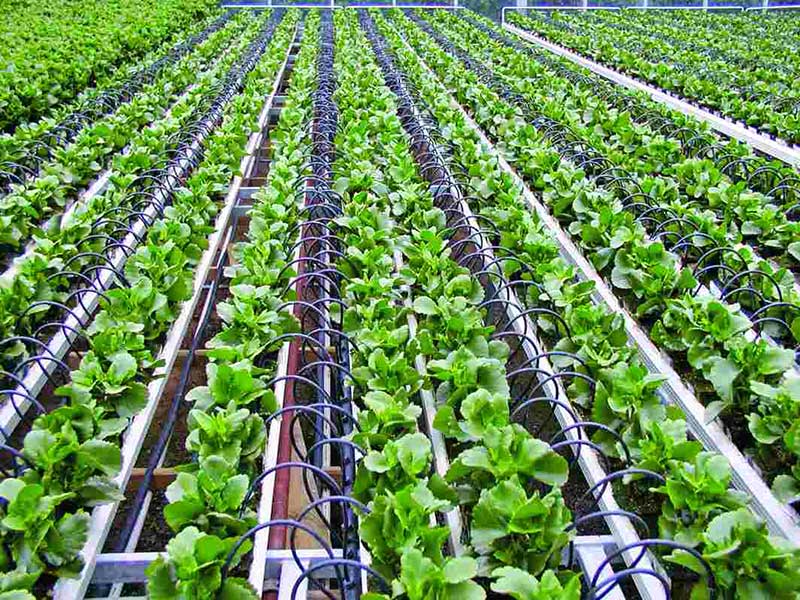Implementation of irrigation systems (drip and sprinkler)
Drip irrigation is a method in which water with low pressure from the hole or a device called a dropper is poured out of the network and poured in drops at the foot of the plant. This type of irrigation is sometimes called local irrigation. The net that distributes the water throughout the field is sprayed on the ground with the help of a dropper and low pressure. One of the characteristics of this method is the delivery of water to the plant with low pressure in the area of root development, at the ground level (under the soil) to wet a small area and depth from the soil surface.
The most important difference between drip irrigation and other irrigation methods is that a balance is established between evapotranspiration and the amount of water that must be given to the soil over a limited period of time (24 to 72 hours). This makes the most water efficiency due to the limited amount of water available. Because local / drip irrigation systems are fixed, many are easy to automate. These systems are suitable for irrigation managers who intend to mix fertilizer and water (irrigation fertilizer) within the irrigation system.
Today, due to water shortage in most areas, drip irrigation methods in both open and greenhouse crops have been very popular. It is true that this method has a high initial investment cost, but because the method is controlled and very economical in terms of water consumption, even in the short term, it is responsible for its initial investment. In this method, a reservoir of water with a suitable capacity with the area under cultivation is usually considered.This tank can be an open water pool or a prefabricated tank that can be assembled on site. Drip irrigation methods are different but have the same function. In the most common one, the manure tank or tank is poured from the main dehydrated tank of manure or food in a certain proportion and after passing through special filters, it is directed to the piping network inside the greenhouse by a pump.

